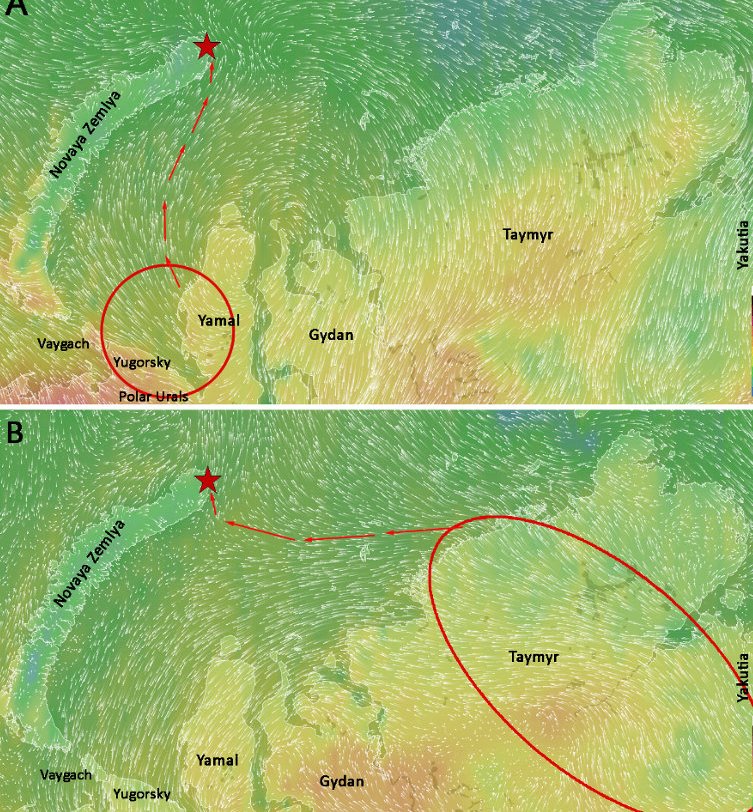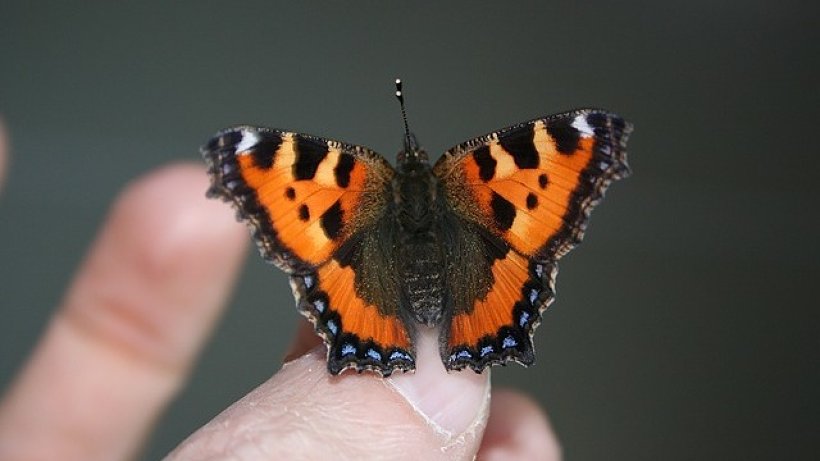#ARCTIC. #SIBERIA. THIS IS TAIMYR. In the north of the Novaya Zemlya archipelago, scientists have discovered the northernmost migration of butterflies in Russia – black and red Vanessa polychloros. Analysts have recreated a possible movement route.
Scientists estimate that the butterflies have covered 580-650 kilometers over the Arctic ocean. One drift in July 2020 was most likely from Yamal, the second in August – from the Taimyr peninsula.
The photo was taken by the inspectors of the Russian Arctic national park at cape Zhelaniya, and earlier they had not seen butterflies on the territory of the park. On the Arctic islands, they were found in Greenland, on Vaigach, Kolguev and Dolgy island. This is the first find on Novaya Zemlya. The longest migration of a butterfly to high latitudes in the world was revealed in 1978 on the Spitsbergen archipelago. There they found another species – a Thistle lady, or Vanessa cardui.
Black and red Vanessa polychloros is a forest species of fairly large butterflies, they usually live in Siberia.
“In 2020, there was an outbreak of numbers in Siberia, in particular, in Yakutia. It turns out that as a result of this outbreak of mass reproduction, butterflies began to migrate northward, moved to the coast of the Arctic ocean and got into the transfer of warm air masses from south to north. The butterfly itself, of course, cannot fly hundreds of kilometers, but in the air mass it rises to a certain height, it only needs to glide, and the air mass carries it with great speed. And on it, like on an air taxi, it reaches the Arctic archipelagos”, TASS quotes Ivan Mizin, deputy director for scientific work of the Russian Arctic.
Scientists note that on Novaya Zemlya, the butterflies can live for some time at the expense of internal resources, but they will not leave offspring. The caterpillars of these butterflies develop on willows. Most likely, the migration of butterflies to the north is associated with climate change.
“Butterflies are a finely tuned bioindicator of Arctic warming. It is interesting that each time appearing of butterflies in the Arctic archipelagos is associated with mass reproduction on the mainland”, scientists say.
Earlier we wrote that the Arctic walrus sailed to the UK. Scientists suggest that the animal swam so far south in search of food.
In the coming years, the length of the seasons could change dramatically. This is due to climate change and accelerated global warming.
Follow us on Telegram, Instagram and Facebook.
Text: Angelica Stepanova, Photo: Federal Research Center for the Comprehensive Study of the Arctic, minval.az, macroid.ru






